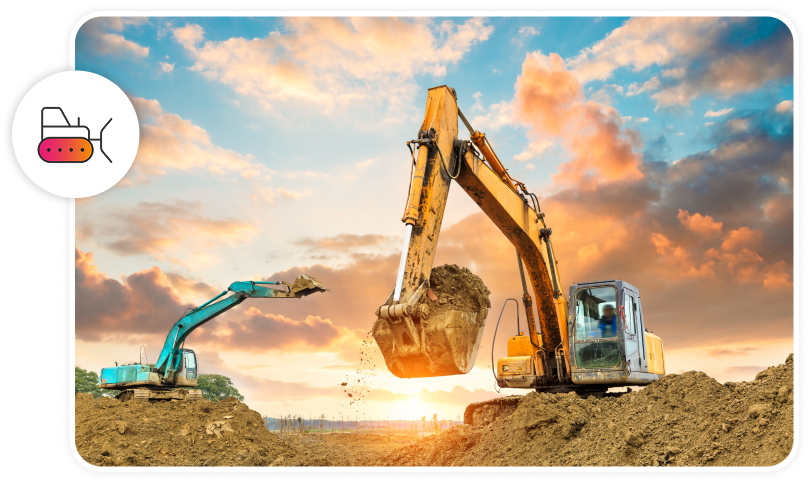The construction sector is the fourth-largest in Canada, yet it ranks third for workplace incidents with lost-time claims.
Employing over 1.2 million workers, the sector is a key driver of Canada’s economic growth. Unfortunately, the majority of incidents continue to stem from:
- Slips, trips, and falls
- Equipment accidents
- Heavy machinery operation

Top five most common hazards in construction
Slips, trips, and falls
Falling and insufficient fall protection on sites can cause serious injuries or death.
Equipment & machine operation
Poses risks from collisions, crushing, pinch points, sharp edges, and hot surfaces.
Caught-between & struck-by incidents
Being struck by or caught between materials, equipment, or vehicles can cause injury or death.
Electrical hazards
Exposed wiring and faulty equipment can lead to electrocution and severe burns.
Noise
Exposure to high noise levels poses a significant risk of hearing loss or permanent damage.
Construction accident statistics
In 2024, 35,000 construction workers were injured, with falls remaining a leading cause. Sadly, inadequate fall protection and improper use of safety gear were linked to most of those accidents.
The construction sector in Canada accounted for a significant portion of workplace fatalities, with 872 deaths reported in 2024.
In 2021, the focus four areas—falls, equipment strikes, caught-between incidents, and electrocutions—were responsible for 65 percent of construction-related deaths.
According to the WSIB, the construction sector is 2.5 percent safer in 2023 than in 2022, thanks to better compliance with OHSA and improvements in return-to-work support, and fewer physical and mental injuries reported.
Be proactive—prevent workplace injuries!
Proactive safety starts with the hierarchy of controls. If hazards can’t be eliminated, engineering controls are the first level of protection. If those aren’t practical, utilize administrative controls like training, SOPs, and incident reporting. Finally, while PPE is essential, it provides the lowest level of protection, and should be used alongside other higher-level controls.
Risk assessments
Risk assessments help implement control measures to reduce dangers on construction sites, minimizing harmful exposure and lowering the risk of workplace accidents.
Training and education
Training programs should focus on core health and safety fundamentals, supported by regular safety briefings. These practices are key to building and maintaining a strong safety culture.
Safe Operating Procedures
Safe operating procedures (SOPs) provide documented instructions to guide workers in carrying out their tasks safely while minimizing risks.
Incident Reporting
Incident reporting plays a crucial role in enabling construction companies to recognize patterns and address root causes, paving the way for effective strategies that help prevent similar accidents.
Connect with one of our health and safety experts today
With innovative technology, expert guidance, immersive online training, incident reporting tools, and risk assessment software, our award-winning Health & Safety software and support help construction companies across Canada build stronger, more effective safety programs.


